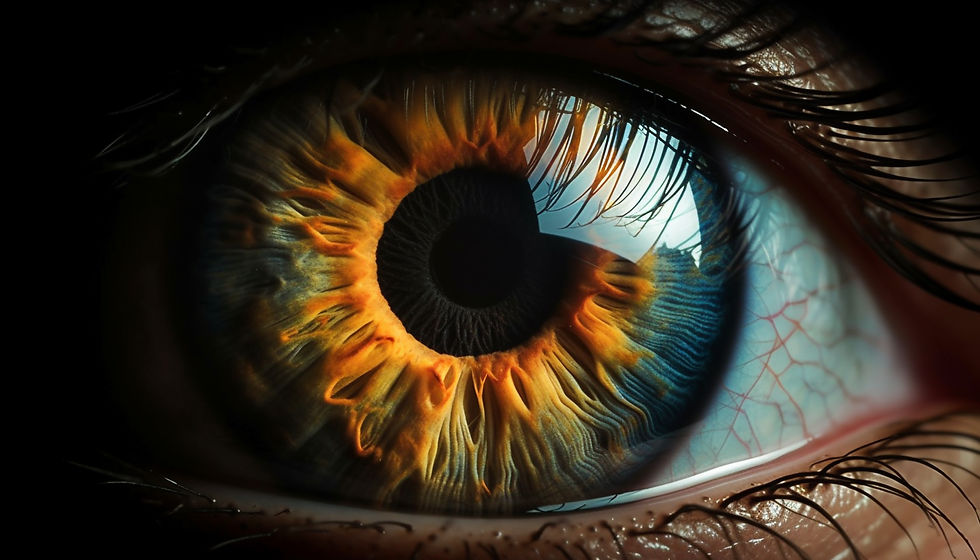Pilates Thoughtful Tuesday The AI Retina Test and What It Can See That a Quick Look Cannot
- Michael King

- Aug 19
- 3 min read

If you have ever had a doctor shine a light into your eye you know the drill. It is fast it checks for obvious problems and it is useful. An AI retina test goes several steps further. It uses a detailed photo or scan of the back of your eye and lets a trained algorithm analyse patterns too subtle for the human eye to spot quickly. The result is earlier warnings clearer triage and fewer missed issues.
What actually happens in an AI retina test
Most services use a retinal photograph called a fundus image or a 3D scan called OCT. The image is run through an algorithm that has been trained on very large datasets. The software looks for minute changes in blood vessels nerves and layers of the retina that are linked to common sight threatening diseases. In head to head tests AI systems working with OCT have matched expert decisions for referral across many retinal conditions.
Why it can out perform a quick look
A quick look with an ophthalmoscope is a snapshot through a narrow window. An AI system reviews a full image or scan with pixel by pixel attention and consistent criteria. That consistency is a strength for screening at scale. In diabetes care the first autonomous AI approved for front line use can detect referable diabetic retinopathy from a photograph without a specialist on site which means faster answers in primary care and quicker referral when needed.
What AI is already good at spotting
Diabetic retinopathy: AI can flag referable disease accurately from a single photograph. Tools such as IDx DR and EyeArt have regulatory clearances and are being used or piloted in real clinics. In the UK programmes linked to Moorfields and the NHS have evaluated EyeArt for live use within diabetic eye screening.
Age related macular degeneration and other retinal diseases on OCT: Deep learning models can analyse 3D scans and make referral recommendations with expert level performance. That helps hospitals prioritise the patients who need to be seen first.
Early glaucoma signals: Research systems can measure tiny vessel and layer changes on images and OCT that relate to glaucoma risk and progression supporting earlier detection and monitoring in future services.
What this means in the UK
Digital screening is already routine for people living with diabetes and the NHS has been studying how AI can reduce backlogs and focus expert time where it matters most. EyeArt has been assessed for live clinical use within an NHS diabetic eye screening programme and national bodies have set out how to evaluate AI safely. The direction of travel is clear bring high quality eye checks closer to home use imaging and smart software to triage and get people into treatment sooner.
Beyond eye disease
Your retina mirrors whole body health. Experimental systems can estimate cardiovascular risk factors such as blood pressure smoking status and even future cardiac events from a retinal photo. This is not standard care yet but it shows how much health signal is hiding in a simple eye image.
Benefits you will notice
Speed: Results can be available within minutes which shortens the wait for referral.
Access: Screening can happen in a GP clinic or pharmacy not only in hospital because you only need a camera and trained staff.
Consistency: Algorithms do not get tired. They apply the same criteria every time which is ideal for large screening programmes.
Sensible cautions
AI is a tool not a replacement for an eye care professional. Poor image quality very rare diseases or unusual presentations can still fool an algorithm. Any positive screen should be confirmed by a clinician and any worrying symptoms need an eye exam even if an AI screen is clear. Governance fairness and audit are essential parts of safe rollout.
Who should consider it now
Anyone with diabetes who is due an annual eye screen
People on long term medicines that can affect the retina if your clinician recommends monitoring
Anyone with sudden changes in vision should be examined urgently regardless of screening tools
Quick takeaways
An AI retina test uses a photograph or OCT scan and can pick up sight threatening changes earlier and more consistently than a brief torch and lens exam
Approved systems for diabetic retinopathy already exist and are being used in real clinics to speed up care
The NHS is actively evaluating and integrating imaging and AI to ease backlogs and prevent avoidable sight loss
Research Sources
DeepMind AI system matches experts in spotting eye disease on OCT scans: Nature
IDx DR first autonomous AI cleared in US for diabetic retinopathy: FDA News Release
NHS Diabetic Eye Screening Programme trial of EyeArt: NHS England Evaluation
Cardiovascular risk factors from retinal photos: Google AI Health Research




Comments